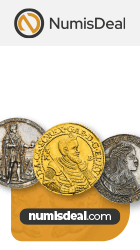

A Burgundian cross may have the shape of an X, but its not a cross. In the late Middle Ages, the symbol of the duchy of Burgundy was a firesteel (Schlageisen in German, vuurijzer in Dutch). This is a piece of iron used for making sparks near tinder in order to start a fire. The firesteel is bent so that it can be put on two fingers and resembles a "B" (hence its attraction to the Burgundians). The firesteel was at first accompanied by two sparks and some stars, later by four sparks and a changing number of stars. The title of Duke of Burgundy was claimed by the house of Habsburg. They used the device on their coins of the remaining Burgundy lands (mainly the Southern and Northern Netherlands, but also the Franche Comté). However, the centre of the device was often covered by a coat of arms. In time, the sparks came to be seen as a cross and the firesteel was forgotten, so that the term "Burgundy cross" came about. In Dutch, it is also referred to (equally wrong) as a stokkenkruis - cross of branches. The four sparks are symmetrical. They should not overlap.

sigur napsal/a:
ocílka?
bingo!😃 ono to v podstatě souvisí s tím řádem zlatého rouna, jehož symbolika souvisí s ohněm, respektive rozděláváním ohně, takže ten domělý kříž jsou v podstatě jen proudy jisker, které vznikají při křesání. ocílka vprostřed toho kříže je klasická modifikace lyrovitého typu. a ten kosočtverec nad tou ovcí není to, co to evokovalo janovi, ale křeasací kámen😃

Překvapilo mě, kam až se může diskuze o křížových tolarech dostat, ale je to v pořádku a patří to sem, protože každá doba má svoje umělecké směry, do kterých se promítá i zpracování symbolů. Proto děkuji kolegovi kacurovi, který tuto otázku zvedl a zodpověděl ji. Musím se přiznat, že i pro mě je tato diskuze poučná, i když jsem výsledek sice znal, ale pouze v hrubých rysech.
Koupím hezky zachovalé mince Františka II. Nabídky prosím zasílejte na email MERKUR1@o2active.cz
Pro vkládání příspěvků se musíte přihlásit.



